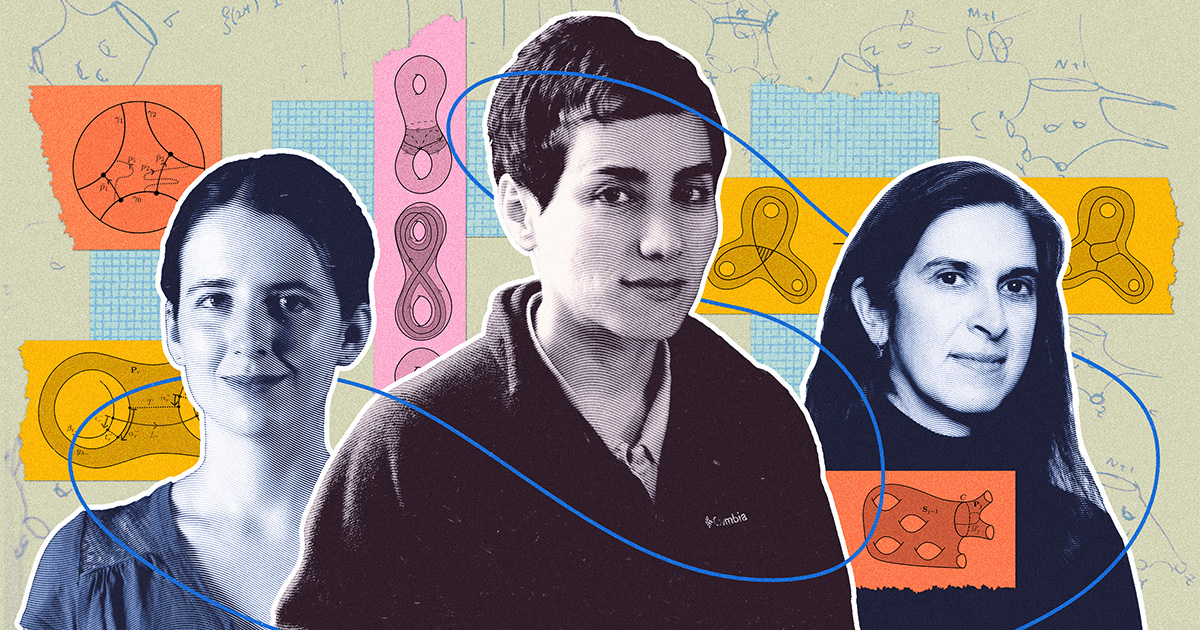Physical Address
304 North Cardinal St.
Dorchester Center, MA 02124
Physical Address
304 North Cardinal St.
Dorchester Center, MA 02124


But using Mirzakhani’s limited formula, Monk and Anantharaman saw a way to prove a relatively large spectral gap. “It looked almost like a miracle,” Anantharaman said. “It’s still quite mysterious to me that it works so well.”
What if she and Monk could sharpen Mirzakhani’s formula to count the more complicated geodesics, too? Perhaps they could get their count to be accurate enough to translate into a spectral gap of 1/4, something that mathematicians before them had hoped to do, too.
Anantharaman suddenly remembered an email she had received from Mirzakhani just a couple of years before she died, posing a series of questions about the relationship between the spectral gap and counting geodesics. “At the time, I didn’t really know why she was asking all these questions,” Anantharaman said. But now she wondered whether Mirzakhani might have been planning to take a similar approach.
Monk spent part of her time in graduate school figuring out a way to extend Mirzakhani’s formula to more complicated geodesics. While doing so, she also wrote long, detailed descriptions of key concepts that Mirzakhani had not fully explained in her original papers. “I feel like some of her ideas were just put on the table for someone to kind of explain them to the community because she didn’t have a chance to do it,” she said.
By 2021, Monk had figured out how to count up all sorts of geodesics that had previously been inaccessible. She and Anantharaman knew that, with some additional work, they could probably use their new formula to get a better estimate of the spectral gap. But rather than publishing a partial result, they were determined to achieve the full 1/4 goal.
Then they got stuck.
There was one particularly gnarly type of geodesic that kept getting in their way. These geodesics would wind around the same region of a surface for a long time, forming convoluted tangles. The tangles appeared only on a small number of ornery surfaces, but when they did, they appeared in droves. If Monk and Anantharaman included them in their total count, it would throw off the computation they needed to perform to translate the count into the spectral gap — giving them an output smaller than 1/4.
The situation seemed hopeless, Monk said.
Her dejection only deepened when two independent teams published papers a couple of months apart in which they proved a spectral gap of 3/16. The news didn’t bother Anantharaman; she only cared about getting to 1/4. “When I start working on something, I kind of fall in love with a distant goal,” she said — apparently a trait she shared with Mirzakhani.
But Monk, still in the last year of her Ph.D. and needing a result that would let her finish her thesis, wondered if they should have settled for less. “I was a bit disheartened that we hadn’t thought of doing that,” she said.
Alex Wright, who was on one of the teams that achieved the 3/16 result, understood her perspective. “It’s pretty unusual for a graduate student to be working on a problem that ambitious,” he said. And it didn’t seem as if anyone was going to figure out a way to achieve 1/4.
But Anantharaman had an idea: to turn to a different area of math, called graph theory, for inspiration. Remember that Anantharaman and Monk were trying to show that most hyperbolic surfaces are as connected as possible. Two decades earlier, the mathematician Joel Friedman proved that most graphs — collections of vertices and edges that appear all over mathematics — have this property.